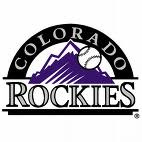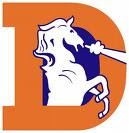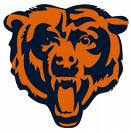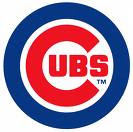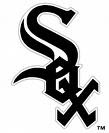Since landing the job as GM of the Rox Dan O’Dowd has developed the nickname of Dealin’ Dan. Why? It’s pretty simple: the man likes making trades. During his first season on the job, he completed 15 deals that involved 42 big leaguers. His second year he made 13 more deals involving 33 big leaguers. Those are astonishing trade numbers and because of that…O’Dowd got the nickname…Dealin’ Dan.
Laying all the trades out ended up being a complete mess. Dealin’ Dan made enough of them that it looked like a family tree of trades or a spider web of confusion. Players that were traded for usually ended up being traded away themselves before unpacking their bags and settling in.
If there was a drop in Rox jersey sales during this era, well the comings and goings of players probably contributed to it. As a fan it was pretty hard to root or latch on to a player because of Dealin’ Dan. You just simply didn’t know whether or not he would ship them out. It was a frustrating time for Rox fans during this period of player shuffling.
Let’s make a deal and look back and some of the trades that has helped shaped the history of the franchise. Since there are a lot of trades…I mean a lot…I’ve broken down this into four sections:
Part A: O’Dowd’s 1st Season (End of 1999 season through the end of 2000)
Part B: The Madness (2001 Season)
Part C: I Give Up (2002 through the end of the 2003 season)
Part D: Is it over? (2004 to Present)
O’Dowd’s 1st Off Season
Trade #1:
First of all we have the trade of three key members of the Blake St. Bombers. I’ve laid out those trades in more detail during my Destruction of the Blake St. Bombers post (click on link to article) so I’ll just touch up on return portions of the deals. Dante Bichette’s trade to Cincinnati for OF Jeffrey Hammonds and RP Stan Belinda was the first big trade that Dealin’ Dan did. It happened about a month after his hiring as Rox GM.
Right out of the gates Dealin’ Dan made a statement by trading one of the fan favorites off the team. Bichette was a popular Rockie and fit the perfect mold of a player being labeled as a Coors Field product. But let’s face it…Dante was in the twilight of his career. Dealin’ Dan knew it and he did something about it.
O’Dowd got something out of Dante while he still could. In return the Rox received an athletic OF in Jeffrey Hammonds and an aged RP named Stan Belinda. Hammonds was a prized prospect of the Baltimore Orioles in the early 90’s. He was once considered a 5-Tool player and played for the U.S. Olympic Team.
Hammonds professional career never played out as envisioned and bounced around the league trying to find his spot. When Hammonds landed on the Rox for Dante, he found his true home. Hammonds felt right at home as a Coors Field product. In the 2000 season Hammonds made the All-Star game and finished the year as a .300+ hitter with 20+ HR’s and 100+ RBI’s.

From a production stand point, Dealin’ Dan came out on top. O’Dowd successfully traded an aging broken down OF for a younger and more athletic one plus a veteran RP. Well Belinda WAS at the end of his career and was released in mid season, but the Rox got something out of him before his departure. Hammonds had a tremendous year and went into the off season as a free agent.
With his successful 2000 campaign, Hammonds used his resurgence in Denver as a barging chip in the free agent market and signed a lucrative deal with the Milwaukee Brewers for 3 yrs/$21 million. Dealin’ Dan decided not to match the deal and let Jeffrey part ways. Bichette by the way was just about done with his career as he bounced from the Reds to the Boston Red Sox and was completely done within two years of the trade.

Trade #2:
Sandwiched in between the Bichette and Castilla deals was the departure of Darryl Kile. Kile was pretty much the third big name pitcher bust for the Rox, but was really the high priced one. By the way I consider the other two “busts” to be Bill Swift and Brett Saberhagen. Swift’s deal was relatively minor compared to anything we’ve seen from the Rox and Saberhagen…well that was just a lopsided deal from the Mets for a 9 game period leading up to the 1995 playoffs.

Kile though…signed a big deal under O’Dowd’s predecessor, Bob Gebhart. On December 4, 1997 Kile signed a 3 year/$24 million deal with the Rox. Kile had come off a career year with the Houston Astros. In his last year with Houston, Kile went 19-7 with a 2.57 ERA.
The marriage got off to a rocky start as Kile led the N.L. in losses his first year and struggled the majority of the 1998 season. Kile had a reputation for having a nasty breaking curve ball, but in the Colorado thin air it didn’t work. Plagued with mental and physical struggles in Colorado, Kile struggled severely as a Rox.
Towards the end of the 1998 season Kile showed some toughness and promise to
 his huge contract by stringing together 6 wins in his final 10 games of the year including a 14 strikeout performance against the Montreal Expos on August 20 and a 12 strikeout performance ten days later in a loss to the Cubs.
his huge contract by stringing together 6 wins in his final 10 games of the year including a 14 strikeout performance against the Montreal Expos on August 20 and a 12 strikeout performance ten days later in a loss to the Cubs.Kile’s success and the end of 1998 continued through the first two months of the 1999 season. Kile gave up 5 ER or less in 11 of his first 13 starts, but then the wheels quickly fell of the bus. Kile struggled to work deep into games and limit opposing teams run count for the duration of the season. Kile never hit double digit strikeout games in 1999.
After another luck luster performance (based on contract standards) in 1999 and leading the N.L. in ER’s given up, Dealin’ Dan stepped in and ended the relationship by trading Kile, RP Luther Hackman, RP Dave Veres to the St. Louis Cardinals for P Rich Croushore, P Jose Jimenez, 2B Brent Butler, and P Manny Aybar on November 16, 1999. Kile ended up pitching for the Cardinals for the next couple seasons.
Immediately after the trade Kile went 20-9 with a 3.91 ERA and finished fifth in Cy Young Award voting. The following year he was 16-11 with a 3.09 ERA. It was clear that the Rox, Coors Field and Darryl Kile just did not work out for whatever reason (probably more so Coors Field).
On June 22, 2002 while still with the Cardinals, Kile suddenly died in a Chicago hotel room while the club was in town visiting the Cubs. His death was attributed to a 90% blockage in two coronary arteries. Kile was 5-4 with a 3.72 ERA.
I was a little sad to see Veres go in the deal because he was just starting to become a solid closer for the Rox. Veres had just come off a pretty good two year stint with the Rox at the end of the bull pen including 31 saves in 1999. He saved another 48 games for the Cards over the next three years.
In exchange the Rox actually scored some pretty productive talent in return. Butler was one of the Cardinals prized prospects at the time (Top 100 prospects for 1998 and 1999 according to Baseball America). Butler played a season and a half in the Rox minor league system before making his way up to the big club.
Butler spent portions of the next three seasons on the Rox including a platoon starting stint in 2002. Butler never did live up to the potential projected upon him, but he did end up being a serviceable player.

Also coming over from St. Louis was a young starting pitcher by the name of Jose Jimenez. On June25, 1999 Jimenez had thrown a no-hitter against the Arizona Diamondbacks, but the Rox had different plans for Jimenez than being a starter. By the end of the 2000 season Jimenez had established himself as the Rox closer. For the next four years Jimenez would become the Rox All-Time closer with 102 saves including 41 in 2002.
The two other returns from the trade Aybar and Croushore didn’t amount to much. Aybar pitched in one game for the Rox and took the loss before getting traded to the Reds. Croushore ended up getting traded to Boston in the Lansing Deal (details down below).
Trade #3:
Forty four days after the first Bomber left the Rox, Dealin’ Dan sent the second one away to the Tampa Bay Devil Rays in a four team trade. 3B Vinny Castilla (31 years old at the time) packed his bags and headed for the sunshine state. Coming over from the D-Rays were SP Rolando Arrojo and IF Aaron Ledesma.
At this point in franchise history the Rox were still a pitching starved team, so the acquisition of Arrojo was with the hopes of a future great. Arrojo had been an All-Star for the D-Rays in 1998, so the Rox knew there was some promise in him.
Arrojo wasn’t a typical young pup phenom at the time. Arrojo was one of those Cuban players coming into the majors after defecting. As we’ve seen in the past their typical ages were exactly what they told the ball clubs they were. He might have said that he was 31 years old, but in Cuban years we add 2-3 years on top of that.
Arrojo made 19 starts for the Rox and displayed a 5-9 record with an ERA of 6.04. Around the July trade deadline…Dealin’ Dan’s favorite month…Arrojo found himself already on the way out the door when he was shipped to the Red Sox along with 2B Mike Lansing and P Rich Croushore for four prospects. See Trade #12 below for more info. Apparently the Arrojo pitching experiment failed and he wasn’t going to cut it.
Ledesma was a utility infielder that found his way onto the field for 32 games. He hit a whopping .225 average in 40 plate appearances. Basically Ledesma was a veteran player off the bench that the Rox got services from for a year.
Trade #4 :
Apart from sending Vinny to the D-Rays, O’Dowd sent P Jamey Wright and C Henry Blanco to the Milwaukee Brewers for P Scott Karl and 3B Jeff Cirillo and sent minor league P Justin Miller to the Oakland Athletics. It was a big trading for the Rox on December 13, 1999.
Wright was the Rox 1st Rd pick in 1993. He was the prized jewel of their organization for a while. He splashed onto the big stage on July 3, 1996 and pitched extremely well in his first game against the Giants giving up 1 run in 6 innings in a 3-2 victory. Unfortunately he did not get credit for the win that day.
Over the next four seasons Wright put together a 25-33 record for the Rox while spending time going back and forth between the majors and minors. The Rox had finally made the decision that he wasn’t going to be part of their future and shipped him to the Brewers (he did return to the Rox for 2004 and 2005).
Henry Blanco was a pretty good defensive catcher with below average offensive skills. Blanco went on to be a solid backup for several major league teams and continues to play in the majors
 today (2009 season). Blanco has played in the area of 800 games and has a career average in the .220’s (his stats are still fluctuating).
today (2009 season). Blanco has played in the area of 800 games and has a career average in the .220’s (his stats are still fluctuating).In return from the Brewers the Rox filled their recently vacant 3B position by receiving a .300 hitter in Cirillo. Cirillo went to have an immediate impact with the Rox and quickly washed away the fond memories that Vinny had given us. Cirillo hit .326 his first year with the Rox drove in 115 RBI’s and finished second in the N.L. with 53 doubles. Cirillo was also an All-Star that year.

Cirillo continued his hitting parade as a Rox in 2001 hitting .313 and a career high 17 HR’s. Everything was working out for the Rox with Cirillo except he was starting to creep up in age and showed some little signs of deteriorating. Cirillo was 31 by the end of the 2001 season and the Rox felt it was time to move him elsewhere in the offseason. See Cirillo 2001 Trade below.
The second piece coming over from the Brew Crew was SP Scott Karl. Karl had been around a .500 pitcher the past five seasons with the Brewers. He was a reliable inning eater who usually had double digit wins and losses each season.
The Rox probably thought he would be a good fit as an average pitcher who could help them out. Well Karl didn’t work out. He pitched in 17 games (starting 9) and ended up being traded to Anaheim on August 22, 2000 as part of a conditional deal (Trade # 15).
2000 Season:
Trade #5:
Starting off the new millennium, Dealin’ Dan continued his roster turn over. On January 14, 2000 Dealin’ Dan sent P Lariel Gonzalez and P Bobby Jones to the Mets for P Masato Yoshii. Jones was a 27 year old prospect that had been a solid starter for the Rox in 1998 and 1999. In his three year tenure with the Rox he compiled a 14-19 record in 69 games and chewed up 273 innings while posting a 5.90 ERA. Jones only pitched in 30 more games over the next four years. Gonzalez pitched his only major league inning for the Rox in 1998.
Yoshii came off a 12-8 year with the Mets and found Coors Field a difficult place to pitch in. Yoshii played only one year with the Rox. Overall the trade between the Mets and Rox was worthless except for the fact that Yoshii had a huge $3 million contract attached to him to pitch one year.

Trade #6:
In March of 2000, Dealin’ Dan made two minor deals prior to the start of the season. On March 29, 2000 he sent OF Edgard Clemente (newphew of Roberto Clemente) to Anaheim for P Jason Dewey and P Norm Hutchins. For those of you familiar with Edgard, he was a highly regarded prospect for the Rox for several years prior to his trade.
Clemente showed promise as a player hitting .353 during a late September call up in 1998. In 1999 Clemente was given a fair shot to show the organization’s brass a little more of what he had to offer. In 57 games (171 AB) Clemente hit .253 with 8 HR’s and 25 RBI’s. Apparently that wasn’t enough to win over Dealin’ Dan as he was shipped to Anaheim.
Clemente played 46 games for the Angels before ending his career. He was once a hot topic of conversation in the Rocky Mountains rumored to be part of several high profile trades in which the Rox were afraid to deal him but in the end he was a bust that was exchanged for two no-name minor league players.
Trade #7:
The second March deal came on the 31st when the Rox acquired OF Carlos Mendoza from the Mets as part of a conditional deal. Mendoza played 13 games and was 1 for 10 at the plate.
Trade #8:
The 2000 season began and shortly afterwards Dealin’ Dan did not like his team and pulled a trigger on another deal. On April 7, 2000, Dealin’ Dan sent RP Manny Aybar (received in Kile deal in November) to the Cincinnati Reds for RP Gabe White. Aybar pitched his one game for the Rox…took the loss…and got shipped out. I guess Dan had enough with him. It was a good move because Dealin’ Dan scores a win in this trade.
White would go on to have a two year career with the Rox before finding himself on the end of another Dealin’ Dan offering. However White did excel in 2000 with the Rox. White posted a 11-2 record with 5 saves and a 2.36 ERA in 67 games that year.

It was a surprising return for such a minor deal. White’s tremendous 2000 season earned him a pay raise in the off season. The big pay check must have been too heavy for White as he fell back to reality and found his 2001 season not so great. White had a 1-7 record with no saves and a 6.25 ERA in 69 games in 2001 and was shipped out back to the Reds in the off season.
Trade #9:
On June 17, 2000 the Rox acquired backup C Adam Melhuse from the L.A. Dodgers for future considerations. Melhuse played sparingly during the next two seasons for the Rox. He appeared in 23 games in 2000 and 40 in 2001. Melhuse never hit over .200 for the Rox.
Trade #10:
On June 28, 2000 Dealin’ Dan traded Ed Vosberg to the Philadelphia Phillies for future considerations.
Trade #11:
As Dealin’ Dan entered his inaugural trade deadline, he began a few weeks early. On July 16, 2000 O’Dowd sent 1B Todd Sears and cash to the Minnesota Twins for 2B Todd Walker and OF Butch Huskey. Who the hell is Todd Sears? A player traded on the wrong end of a bad deal. Score one for Dealin’ Dan!

Sears never went on to amount to much in the majors. He played 86 games for the Twins over the 2002 and 2003 seasons while hitting 2 HR’s and supported a .260 average. He was later traded to the San Diego Padres in 2003 for a minor leaguer and hasn’t popped up in the majors since.
Walker ended up being the steal of the trade for the Rox…at least until they screwed themselves and traded him away later.

Also coming over from the Twins in the deal was OF Butch Huskey. The 2000 season ended up being the last season for Huskey in his major league playing career, but he did enjoy his short time with the Rox. In 45 games he hit .348 with 4 HR’s and 18 RBI’s, a feat still far better than what Sears did for the Twins.
Trade #12:
On July 27, 2000 Dealin’ Dan sent 2B Mike Lansing, SP Rolando Arrojo, RP Rich Croushore and cash to the Red Sox for 2B Jeff Frye, P Brian Rose, P John Wasdin and P Jeff Taglienti.
The trade marked the end of Mike “Laser” Lansing’s days in a Rox uniform. Laser was a Wyoming native who came up through the majors as a 2B for the Montreal Expos. Every time he came to the Mile High City as an Expo he seemed to have an offensive hay day against the Rox. Eventually the Rox brass decided that...if you can’t beat ‘em…join ‘em!
The Rox did just that when they traded for Laser in November of 1997, but gave up a
 high price for him in sending 1st Round pick P Jake Westbrook along with two other prospects to the Expos. Not to be mistaken, this was a Bob Gebhardt deal. Laser had tremendous upside that Gebhardt even signed him to a lucrative contract extension for 4 years/$23.25 million (making him a top 5 paid player on the ball club) just to make sure he was around for a while.
high price for him in sending 1st Round pick P Jake Westbrook along with two other prospects to the Expos. Not to be mistaken, this was a Bob Gebhardt deal. Laser had tremendous upside that Gebhardt even signed him to a lucrative contract extension for 4 years/$23.25 million (making him a top 5 paid player on the ball club) just to make sure he was around for a while.Laser, a talented offensive second basemen, who was projected to extraordinary things once you factored in the great hitting ball park in Coors Field and the thin air in Colorado. Laser would make everyone forget the departure of fan favorite second basemen Eric Young (who was traded towards the end of the previous season).
That was the belief.
What really happened was something different. Laser went on to have a decent first year with the Rox in 1998. His statistics weren’t what everyone had predicted or envisioned, but nonetheless it was a productive year.
Laser’s second year was pretty much wiped out due to injury limiting him to 35 games. Laser returned in 2000 only to have a poor start. Laser showed more pop in the bat with his HR power, but his average had taken a plunge.

Finally O’Dowd said “enough was enough” and dealt him to the Red Sox marking a lack luster career for another Rox overhyped player. Arrojo (acquired in Castilla Trade #3 deal), Croushore (acquired in Kile Trade #2 deal) and cash (to help pay for Laser’s contract) was also sent to the Sox for four prospects.
Pitching prospects John Wasdin and Brian Rose were the key players the Rox had their eyes on in the deal. Wasdin had the “stuff” to be a big time big league pitcher but never really panned out. Rose was a younger pitcher that was more ready for the big show, which is why he started more games, but was quickly traded away in the offseason for SP Mark Leiter.
The third piece of the trade was utility infielder Frye. Frye had a surprise impact in 2000 as a versatile player in limited action. Frye showed the Rox that he was a good contact hitter (.356 ave) with little power (0 HR’s). Taglienti was traded in the off season to the Reds without even pitching a game for Rox.

Trade #13:
So far Dealin’ Dan has made twelve trades since taking over. Trade #13 comes as his only July 31st (trade deadline) deal of 2000. This trade starts to show the puzzling insanity of Dealin’ Dan because now he’s shipping out players that he brought in own his own. On December 9, 1999 Dealin’ Dan signed CF Tom Goodwin to a deal with the Rox. July 31, 2000 Goodwin is shipped along with cash to the L.A. Dodgers for OF Todd Hollandsworth, Randy Dorame, and Kevin Gibbs.
It was a steal of a deal on Dan’s part, but as a fan I was starting to question what he was really doing. With all the other trades I went along with the notion that he was discarding Gebhardt’s trash for his own players. Whether or not I like the players being moved, I bought into what he was doing…clean house and then make your own bed.
When Goodwin was signed I thought he would actually be around for a couple of years as a stop-gap fill in CF. I didn’t think he would be around
 for a couple months. The end result happened to be a brilliant move for the Rox, but I and other fans were probably getting skeptical about Dan’s dealings. This would probably be considered the first in a pattern of a number of players that Dan would sign in the offseason and deal out some time later that year.
for a couple months. The end result happened to be a brilliant move for the Rox, but I and other fans were probably getting skeptical about Dan’s dealings. This would probably be considered the first in a pattern of a number of players that Dan would sign in the offseason and deal out some time later that year.Well enough with my little thought process rant and back to the trade…
Goodwin had just played 91 games for the Rox before getting sent to the smog center of the U.S. He was one of the league leaders in SB’s at the time with 39 and towards the top in 3B’s with 8. Goodwin proved to be a valuable defensive asset in CF while being a pretty decent leadoff hitter for the Rox (.271 ave).
His sudden departure brought over a more powerful hitting Hollandsworth, a former Rookie of the Year, and also opened the door for another solid speedster to roam the CF grounds in Coors Field, Juan Pierre. Ah…this is why Dealin’ Dan dumped Goodwin. He blocked Pierre from playing, and on top of it we got a power hitter in return.
To be honest, I have no idea what came about with the other two dudes that came over in the
 deal, but Hollandsworth made the deal lopsided by himself. Hollandsworth became a productive piece to the always changing Rox jigsaw puzzle. He finished the 2000 season with a strong .323 batting average and slugged out 11 HR’s in 56 games with the Rox.
deal, but Hollandsworth made the deal lopsided by himself. Hollandsworth became a productive piece to the always changing Rox jigsaw puzzle. He finished the 2000 season with a strong .323 batting average and slugged out 11 HR’s in 56 games with the Rox.If there was a knock on Hollandsworth it was that he had a case of an injury bug. That bug hit him for the majority of the 2001 season limiting him to 33 games, but it was a productive stretch again. Hollandsworth hit .368 in 117 plate appearances.
Hollandsworth continued his torrid hitting into the 2002 season before getting dealt…again…in another Dealin’ Dan package to the Texas Rangers (see Trade Winds Part C for details).

Trade #14:
A few days after the “trade deadline”…Dealin’ Dan found himself once again unhappy with his current roster and dealt another off season free agent signing on his way before completing a full year with the Rox. On August 6, 2000 OF Brian Hunter was dealt to the Reds for Robert Averette.
Hunter probably was hardly missed by Rox fans because they probably hardly knew he was here. Hunter platooned the OF with several other players at the start of the season, but with the acquisition of Hollandsworth, the emergence of Pierre, and All-Star Hammonds already occupying the three OF spots, Hunter was odd man out. There was Larry Walker going up and down the D.L. along with recently acquired Huskey hitting the laces off the ball in limited duty.
Bottom line was that there were too many OF’s on the team for few spots so Hunter had to go. Hunter played 72 games for the Rox while hitting .275. Averette never played for the Rox.
Trade #15:
August 22, 2000 marked the end of SP Scott Karl’s run as a Rox (acquired in Cirillo deal/Trade #4). Karl was sent to the Angels as part of a conditional deal.
Shipping Karl out to Anaheim marked the end of Dealin’ Dans for the 2000 season and his first year as GM of the Rox. A total of 15 deals went down the pipe starting with the shipment of Dante Bichette to the Reds shortly after the 1999 season.
If you didn’t know why Dan O’Dowd has been given the nickname of Dealin’ Dan hopefully this sheds some light on the matter. But here’s a fair warning…he wasn’t done yet. This concludes Part A of Trade Winds. Stay tuned for Part B (dedicated to the 2001 season).
To Be Continued...



